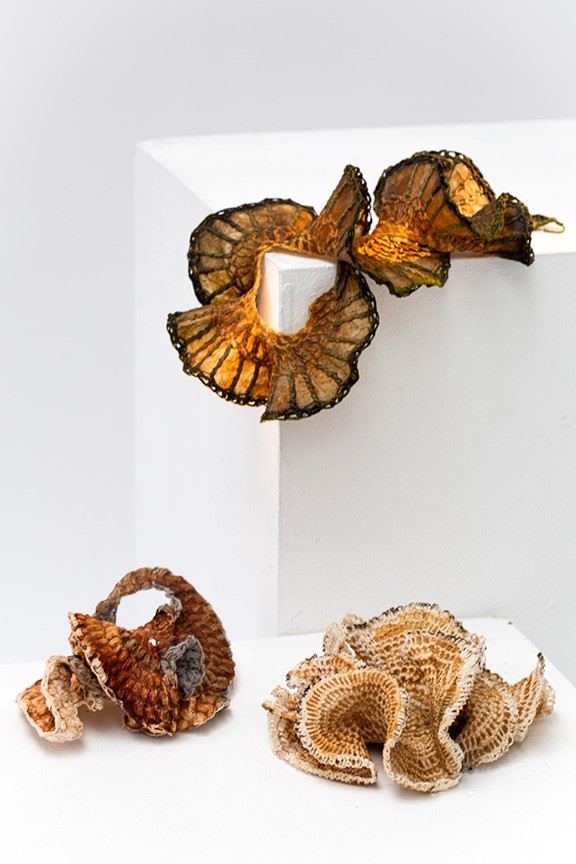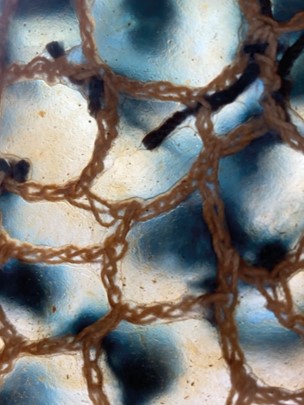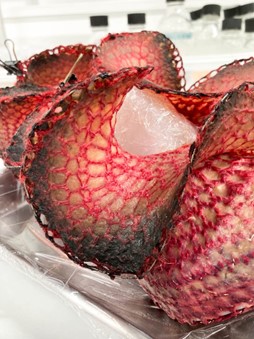
Photo: Carolina De Lara.
Carolina De Lara’s project, Bacterial Brickbats, explores the interaction between bacterial cellulose and knit textiles to challenge traditional, human-centered design in fashion and textiles. The project negotiates human/non-human liaisons by proposing a study where sharing agency between designer and bacterial cellulose produces a material library illustrating differing needs, creative or biological, resulting in an expressive range and dimensionality.
Investigating the essential nature of this living material actively interacting with knit, the project identifies designable textile qualities achieved through human-bacterial collaboration, applying these findings toward situated artifact creation.

The artist explores reassembly as a subsidiary property of bacterial cellulose’s natural growth and self-assembling potential through a comprehensive material library. This library consolidates the understanding of it as a living textile and acknowledges its organic intelligence as capable of design by rooting the design method in biological growth and the cellulose’s behavior toward knitted textile.
“Designing toward regenerative economies transcends the purely technical,” says De Lara. Bacterial Brickbats negotiates this systemic leap by focusing on the knowledge and workflow derived from the design method. It suggests what can be accomplished with selected techniques and available materials, but encourages openness with its investigations, materials and techniques, and continuing exploration of those results.

This approach heeds both human and non-human roles in the design process by progressively and gradually shifting design agency between both parties, affording the human the chance to observe, understand and design in synchrony with the bacteria’s morphology and behavior.
 TEXTILES.ORG
TEXTILES.ORG


